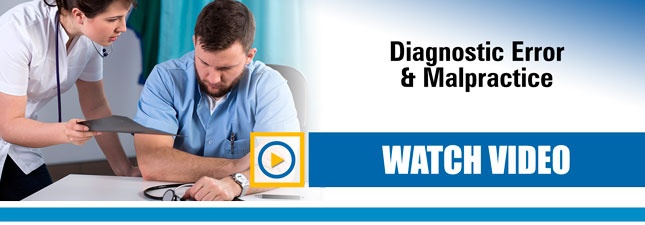 Over the last 19 years, clients have watched TSG’s library of online courses grow from 10 courses focused on Emergency Medicine to over 275 courses that span the spectrum of healthcare. We are often asked by clients, “Which courses should we focus on first?” While this answer varies greatly based on the specifics of each client, we have taken the liberty of creating a list of courses/topics that we feel are critical for all patient safety initiatives and tend to resonate with clinicians.
Over the last 19 years, clients have watched TSG’s library of online courses grow from 10 courses focused on Emergency Medicine to over 275 courses that span the spectrum of healthcare. We are often asked by clients, “Which courses should we focus on first?” While this answer varies greatly based on the specifics of each client, we have taken the liberty of creating a list of courses/topics that we feel are critical for all patient safety initiatives and tend to resonate with clinicians.
- TSG Course Name: Essentials of Patient Safety
Course Description: Healthcare professionals have an obligation to themselves, their patients and their industry to practice and provide the very best medical care in the safest possible manner. The reality of today’s healthcare system is that many of the same medical errors are repeated, and this exposes healthcare providers to unnecessary patient safety and legal risks. In the HMD (formerly IOM) landmark report entitled To Err is Human, the HMD estimated that as many as 98,000 patients die each year from medical errors and one out of 25 hospitalized patients receives an injury as a result of a medical mistake. The yearly cost for medical errors was estimated to be as high as $29 billion. Unfortunately, most traditional medical training programs did not adequately prepare physicians and nurses to deal with the epidemic of medical errors. The promising news is that many, if not most, of these errors can be easily avoided or eliminated altogether.
- TSG Course Name: Never Events
Course Description: Never Events always seem to occur in healthcare. The cost to society in terms of patients harmed, lives lost and dollars spent is staggering. In 2002, the NQF created an initial list of 27 adverse events considered to be Never Events; over recent years, additional event types have been added. Events are grouped into seven categories of occurrences that should never take place: surgical events; product or device events; patient protection events; care management events; environmental events; radiologic events; and criminal events. Never Event lists were created to alert and educate healthcare professionals about these preventable and costly mistakes that should never have occurred. The goal is to find solutions to the root causes of these events and correct them. In many instances, implementation of evidenced-based guidelines, accepted best practices, and standardized communication techniques are means to correct (and avoid) these serious and needless medical errors.
- TSG Course Name: Prevention of Medical Errors
Course Description: For centuries, providers have practiced medicine by following the age-old Hippocratic rule of “first do no harm.” Unfortunately, and all too often, preventable medical errors and patient harm are caused not by bad intentions or insufficient training, but by flaws in the healthcare delivery system and processes used by providers. For decades, the medical community has been plagued with medical mistakes and unnecessary mishaps that are repeated time and time again. The good news is that by acknowledging and correcting the real causes of many medical errors, a new system of patient safety processes can be designed to reduce errors, improve quality care, and decrease provider liability. Among the types of errors covered in this course are surgical, medication, communication and teamwork, transition and handoff, and errors related to patient safety technology. We also discuss the emerging and necessary shift away from traditional methods of error analysis to a system approach to patient safety and outline the stepwise process of root cause analysis (RCA).
- TSG Course Name: Handoffs, Transitions and Discharges: Key Moments in Patient Care
 Course Description: Today's complex healthcare system relies on handoffs and transitions to move patients and their personal medical information through a maze of providers and institutions. Literally thousands of hospital handoffs and transitions occur each day. Unfortunately, healthcare handoffs are often catalysts for communication errors that result in significant adverse events and patient harm. Medication information, in particular, is at risk of being miscommunicated or omitted at points of patient transition. In addition, one of the most pressing patient safety topics of our time is the need to reduce unnecessary hospital readmissions. With the advent of healthcare reform, institutions with elevated hospital readmission rates are being put at a financial disadvantage for reimbursement purposes. During this online course, we outline communication- and process-related challenges associated with healthcare handoffs, transitions and discharges, and provide strategies and techniques to help improve communication, decrease patient risk, and reduce liability, risk and costs.
Course Description: Today's complex healthcare system relies on handoffs and transitions to move patients and their personal medical information through a maze of providers and institutions. Literally thousands of hospital handoffs and transitions occur each day. Unfortunately, healthcare handoffs are often catalysts for communication errors that result in significant adverse events and patient harm. Medication information, in particular, is at risk of being miscommunicated or omitted at points of patient transition. In addition, one of the most pressing patient safety topics of our time is the need to reduce unnecessary hospital readmissions. With the advent of healthcare reform, institutions with elevated hospital readmission rates are being put at a financial disadvantage for reimbursement purposes. During this online course, we outline communication- and process-related challenges associated with healthcare handoffs, transitions and discharges, and provide strategies and techniques to help improve communication, decrease patient risk, and reduce liability, risk and costs.
- TSG Course Name: Cognitive Errors in Medicine
Course Description: A patient safety program typically has several facets, but one of the key components is the investigation of serious adverse medical events. Most methods of error analysis focus on problems inherent in the system rather than individual behavior. Recently, however, new concepts regarding the origin of medical errors have been introduced in the medical literature. These concepts deal with the psychology of clinical decision-making. Healthcare practitioners are subject to heuristics and biases — or cognitive dispositions to respond — which influence clinical decision-making and can result in cognitive errors. Thus, the technique of cognitive error analysis, used alone or in combination with other methods of error analysis, can serve as a valuable resource when added to the patient safety toolbox of any individual or organization. In this activity, we examine how thought processes influence decision-making, affect patient care, and contribute to medical mistakes. We introduce six types of cognitive errors and discuss real case examples to illustrate how cognitive errors contributed to delayed or missed diagnoses.
- TSG Course Name: Batch Events – Catastrophic System Risk
Course Description: “Batch medical incident” is a term coined by the insurance industry to recognize and manage a certain type of legal claim. Medical practitioners and hospital and organizational leadership should become educated about the range or profile of batch type events and how to introduce system solutions that avoid or mitigate the frequency and severity of such events. These events are often tragic: they impact many lives directly, sometimes over a period of decades; they involve astronomical costs; they can bankrupt hospitals or organizations; and they may have criminal implications, typically related to fraud and abuse. In this activity, we present a wide range of batch type events using real-life case reviews covering the following topics: unnecessary cardiac and surgical procedures; credentialing issues; surgical equipment sterilization issues; sexual abuse cases, infectious disease exposures; and medical products and equipment.
- TSG Course Name: Sepsis
Course Description: Sepsis is a high-risk diagnosis for all physicians, particularly those providing acute or episodic care. Sepsis presents a unique problem. The practitioner usually has one opportunity to make the diagnosis of early sepsis and begin empiric antibiotic therapy. If that opportunity is missed, the patient often returns severely immune compromised and with problems too advanced to treat. Review of malpractice cases involving sepsis reveals that risk often results from a failure to recognize the subtle vital sign abnormalities of early sepsis. In addition, three sources of sepsis (meningococcal meningitis, intrabdominal processes, and necrotizing fasciitis) are commonly seen in malpractice cases, especially when delays in definitive diagnosis and treatment lead to adverse outcomes. The key to making an early diagnosis of sepsis and avoiding medical errors is knowing how the syndrome begins. Textbook chapters on sepsis describe the causative agents and the clinical response, physiologic changes, and management. However, what the textbooks do not describe are the subtleties and nuances of early sepsis. How do patients with symptoms of early sepsis present? Why is it missed or overlooked? Why do physicians make the incorrect diagnosis? In this activity, we answer these questions and present a number of cases of the failure to diagnose sepsis. We point out common themes in these cases to assist practitioners in identifying early sepsis, distinguishing specific causes of sepsis that need urgent consultation or specific management for source control, and effectively managing high-risk situations that can otherwise lead to delays in appropriate, early goal-directed therapy (EGDT). We also discuss changes in the management of severe sepsis and septic shock, as recent research focused on early aggressive management of severe sepsis has demonstrated that certain treatment modalities significantly alter morbidity and mortality.


